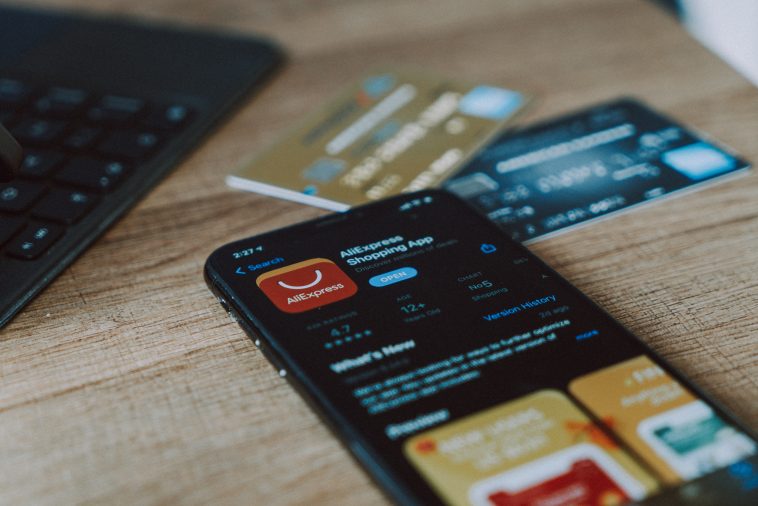Introduction.
Starting a dropshipping business can be one of the most accessible ways to dive into e-commerce. Unlike traditional retail models, dropshipping doesn’t require you to buy products upfront or handle logistics like shipping.
Instead, you only buy a product after you’ve made a sale, and a third-party supplier ships it directly to the customer.
This lowers startup costs and lets you test a wide variety of products without the risk of having unsold inventory.
Shopify is one of the most popular platforms for starting a dropshipping business. It’s user-friendly, doesn’t require a lot of technical knowledge, and offers various tools to help build, manage, and scale your store.
Plus, Shopify integrates with popular dropshipping apps like Oberlo, DSers, and Spocket, which makes it even easier to find suppliers, manage orders, and track inventory—all from one place.
In this guide, I’ll walk you through everything you need to know about starting a dropshipping business with Shopify.
I’ll cover the pros and cons, share practical steps to set up your store, and answer common questions that can help you start strong.
By the end of this post, you’ll have a clear roadmap on how to launch your own dropshipping store using Shopify and the essentials to make it successful.
Why Choose Dropshipping on Shopify?
Dropshipping has grown massively, with global e-commerce sales expected to reach $6.5 trillion by 2023, according to Statista. Shopify is a popular choice for a lot of reasons, and here’s why it’s a great fit for dropshipping:
- Low Startup Costs: You don’t need to invest in inventory, a warehouse, or complex logistics, which makes it easy for beginners.
- Scalability: As your store grows, Shopify offers features to support that growth, from automated order processing to marketing tools.
- Ease of Use: Shopify’s platform is beginner-friendly, and their 24/7 support is always there to help with issues.
- Integrated Dropshipping Apps: Apps like Oberlo and DSers connect directly to your Shopify store, allowing you to import products from suppliers, update stock levels, and even automate order fulfillment.
How Do I Start a Dropshipping Business on Shopify?
1. Pick a Niche
The first step is choosing what you want to sell. Find a niche that’s both interesting and has enough demand.
Look for something you’re passionate about, as it’ll make it easier to market. Make sure it’s not overly saturated; you want to stand out from the competition.
2. Set Up Your Shopify Account
Sign up on Shopify and choose a plan that fits your budget and goals. You can start with the Basic plan, which has everything you need to get your store running.
3. Choose Your Dropshipping App
Shopify integrates well with dropshipping apps like Oberlo, DSers, and Spocket. Each has unique suppliers, so explore to see which app aligns with your product needs and budget.
4. Add Products to Your Store
Use your dropshipping app to import products directly to your store. Adjust product descriptions, add high-quality images, and set competitive pricing.
5. Design Your Store
Pick a theme that suits your brand. Shopify offers various free and paid themes. Customizing your theme to create a user-friendly experience can help set your store apart.
6. Set Up Payment and Shipping.
Shopify makes it easy to accept credit cards, PayPal, and more. Since dropshipping apps usually handle shipping, set customer expectations by clearly stating estimated shipping times.
7. Launch and Market Your Store
After your store looks great and your products are set, it’s time to promote it! Use social media platforms, run ads, or reach out to influencers in your niche to get your products in front of potential customers.
Pros and Cons of Dropshipping on Shopify
Pros:
- Low Risk, Low Investment: You only pay for products after you’ve sold them.
- Flexibility and Freedom: You can operate your business from anywhere, as long as you have internet access.
- Easy Testing: Dropshipping allows you to test products without committing to large orders, so you can see what sells best.
- Less Hassle: You don’t have to worry about packing, shipping, or handling inventory.
Cons:
- Lower Profit Margins: Since suppliers handle fulfillment, they charge a fee, which means lower profit margins.
- Quality Control Issues: Since you’re not physically handling products, you have limited control over quality.
- Shipping Times: Depending on where your suppliers are located, shipping times might be longer, which can affect customer satisfaction.
- High Competition: Because of the low barrier to entry, dropshipping is highly competitive, and standing out can be challenging.
FAQ
Q1: How much does it cost to start dropshipping on Shopify?
The exact cost depends on the Shopify plan you choose and any additional tools you use, but here’s a rough breakdown:
- Shopify Plan: Starts at $29/month.
- Domain: Roughly $10–$20/year if you want a custom domain.
- Marketing and Ads: This varies widely depending on your budget, but $50–$100 is a common starting point.
- Apps: Some dropshipping apps are free, while others may charge a fee based on the number of products or orders.
Q2: Can I use multiple dropshipping apps on Shopify?
Yes, Shopify allows you to integrate multiple apps, so you can use different suppliers for different products. Just keep an eye on stock levels and shipping times if you have multiple suppliers.
Q3: How do I handle returns and refunds with dropshipping?
Returns and refunds can get tricky with dropshipping, as you’re relying on a third-party supplier. Check the return policy of each supplier you work with and outline your store’s policy clearly to customers. Many dropshipping apps offer some support with returns, but make sure you communicate expectations up front.
Q4: Is dropshipping still profitable in 2024?
Yes, dropshipping is still profitable, but success depends on picking the right products, pricing them well, and effectively marketing your store. Profit margins are often lower, but if you find a unique niche and build a strong brand, dropshipping can be quite lucrative.
Q5: Do I need a business license to start dropshipping?
While Shopify doesn’t require a business license to start selling, your local laws might. It’s a good idea to check regulations in your area to make sure you’re compliant.
Q6: What’s the best way to drive traffic to my dropshipping store?
Social media marketing and paid advertising are popular methods for attracting customers. Consider running Facebook ads, using Instagram to showcase your products, or even starting a blog or YouTube channel to attract organic traffic.
Final Thoughts
Starting a dropshipping business on Shopify can be a fantastic way to explore entrepreneurship with lower upfront costs and less risk.
With the right approach, dedication, and a clear understanding of the market, you can build a profitable store.
While challenges like competition and potential shipping delays can add complexity, the flexibility and scalability make dropshipping worth considering for many aspiring business owners.
So, are you ready to take the plunge into dropshipping with Shopify? Or maybe you’re still weighing the pros and cons? What’s your biggest question about getting started?





GIPHY App Key not set. Please check settings